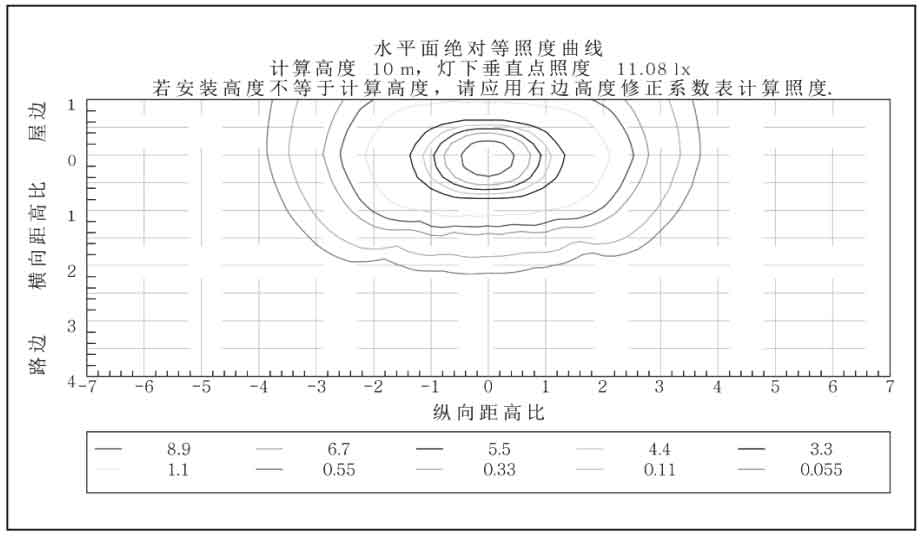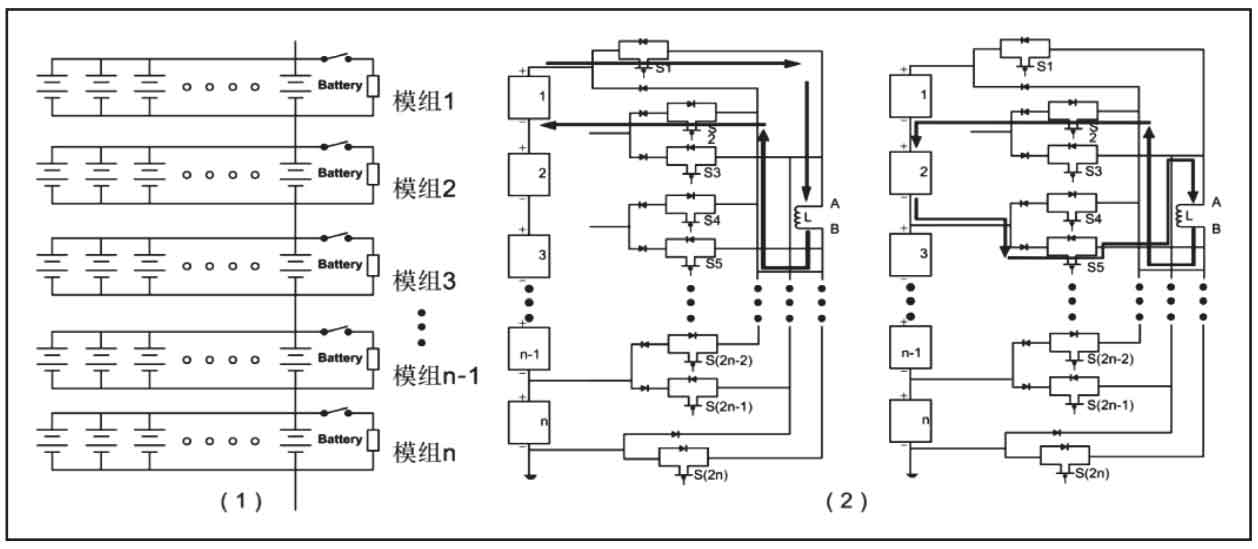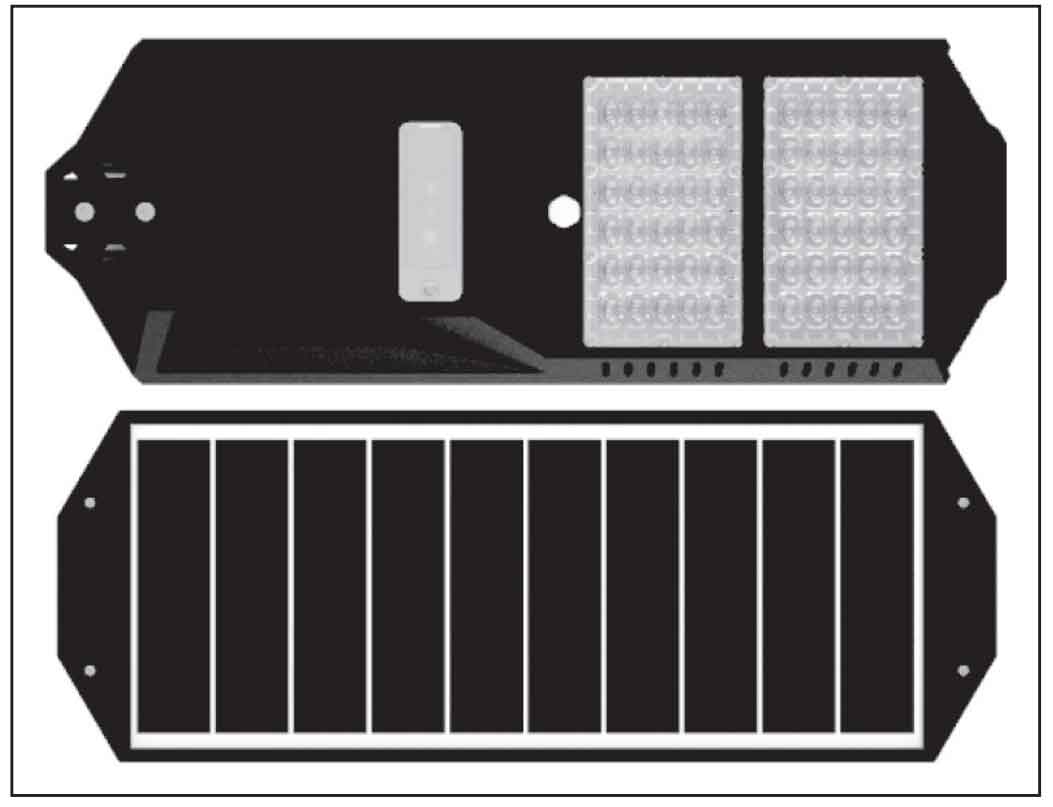Due to difficulties in road access, cable laying, and relative lack of electricity, the lighting conditions on roads in rural areas, especially in remote mountain villages, are lagging behind, posing significant safety hazards to villagers during nighttime travel; In addition, to become rich, one must first build roads. However, without sufficient lighting conditions to support the road, it will be difficult to work at night, and vehicles or pedestrians will have trouble entering and exiting, which will also bring huge obstacles to rural revitalization.
With the development of photovoltaic technology, solar street lights combined with LED street lights as renewable energy have sparked a construction boom in many cities and towns in China. Our company began assisting Jiaoshuikeng Village in Fenghuang Town, Chao’an District and Huangzheng Village in Fubin Town, Raoping County in the second half of 2019 to carry out the Chaozhou Science and Technology Plan Rural Revitalization Special Topics: “Demonstration Application of Integrated Solar Green Lighting in Rural Revitalization Development” and “Demonstration Application of High Power Split Solar Street Lights in Rural Road Lighting Renovation”. Based on the successful implementation of the rural revitalization project, this article briefly discusses the application of LED green lighting based on photovoltaic technology in the lighting renovation of rural roads.
1. Current situation
At present, most towns in China use high-pressure sodium lamps for street lighting, with commonly used powers of 100W, 250W, and 400W. Compared to LED light sources, high-pressure sodium lamps consume 1-2 times more energy at the same brightness, which does not conform to the development concept of green and energy-saving; At the same time, the color rendering of high-pressure sodium lamps is poor (Ra=20-40), and the reflectivity of the road surface and surrounding objects is low. In addition, the yellow light of high-pressure sodium lamps ≤ 3000k makes people feel dim.
In addition, roads and public lighting are also major consumers of electricity, which is a heavy burden for mountainous villages with limited electricity and low income. At the same time, it is easy to form: ① long lighting circuits, complex wiring and burial, and high laying costs; ② The line is susceptible to damage from rodents, insects, and ants, resulting in high maintenance costs; ③ Lighting facilities in mountainous areas are prone to lightning strikes, resulting in high maintenance costs and difficult rural lighting problems. To overcome the above difficulties, it is necessary to seek a lighting equipment that does not require laying cables, can generate electricity independently, and has an integrated defense structure that reduces exposed wires and prevents damage from rodents, insects, and ants.
2. LED solar street light technology suitable for township road lighting renovation
2.1 Efficient LED lighting technology and distribution technology suitable for township roads
From the aspects of luminous characteristics, packaging structure, and cost-effectiveness, LED solar street light sources are preferred to use a three chip parallel scheme within the same LED bead. The chip current is limited to the low current state with the highest light efficiency, achieving a light efficiency of ≥ 200lm/w and a total light efficiency of ≥ 140lm/w, which is 2-3 times higher than the light efficiency of traditional high-pressure sodium lamps. That is, the power of LED street lights at the same brightness is only one-third of that of high-pressure sodium lamps, It can save a lot of electricity consumption for township road lighting.
According to the characteristics of outdoor lighting and human visual perception of light, while considering light efficiency, it is advisable to choose township road lighting with a color rendering index of ≥ 0.7 and a color temperature of 3500-5000k (preferably 4000k, with lower color temperature optional for some reflective roads or rainy and foggy environments). The photovoltaic parameters of the solar street lamp (50w) suitable for township roads are shown in Figure 1.

Most of the township roads are narrow, with a road width often less than 9m. Single side or cross lighting is commonly used, and the distance between the lights is greater than the road width. This requires street lighting to focus the light as much as possible along the direction of the road. Therefore, the light distribution method needs to adopt a more flattened spot structure (the light distribution curve is shown in Figure 2), that is, the luminous angle along the road direction should be greater than the luminous angle in the vertical direction, and the length to width ratio of the elliptical spot (square spot length to width ratio) is always 2:1; And based on the width of the road surface, determine the height of the lamp post, the distance between the lamps, and the method of lamp placement.

2.2 Efficient photovoltaic power generation technology suitable for township roads
The surrounding environment of rural roads is complex and variable, requiring a higher conversion rate of photovoltaic modules. Single crystal silicon modules are preferred for solar street light components in rural areas. The conversion efficiency is improved by adding an optical anti reflection and anti reflection film on the top surface, adjusting the depth to width ratio of the triangular prism formed by the sealing/laminating pattern on the surface of the solar panel and the sawtooth arrangement structure of the crystal panel, and using ceramic white EVA material between the solar panel and the back panel to increase the internal light reflection and absorption, among other multi-layer optical gain structures, achieving a conversion rate of ≥ 20%, Provide sufficient power supply for solar street lights.

When photovoltaic modules charge lithium battery packs, active balancing technology is selected based on the characteristics of the battery pack. For a single battery or a single module battery pack (multiple batteries in parallel), a passive equalization circuit is used (as shown in Figure 3 (1)); For the balancing of high-capacity multi-mode series battery packs, a Buck Boost circuit with a secondary balancing unit between modules is added in addition to the passive balancing circuit (as shown in Figure 3 (2)). The two-stage active balancing technology has the advantages of high circuit energy utilization and fast balancing speed, as well as simple circuit structure, fewer components, and lower cost.
2.3 Integrated defense structure for lighting fixtures applicable to township roads
Towns are generally located in the suburbs, with relatively open areas and strong outdoor winds; The phenomenon of rodents, insects, and ants invading outdoor electronic devices is relatively frequent; In addition, some mountainous areas are located in areas with thunderstorms and strong convection. This requires LED solar street lights suitable for township roads to have a good integrated defense structure, with safety performance such as wind resistance, lightning protection, and anti rodent, insect, and ant invasion.

The integrated defense structure of the lighting fixture (as shown in Figure 4) integrates the photovoltaic module, controller, and light source as much as possible, using a sealed metal cavity as the protective foundation. On the one hand, it tries to avoid exposing the components or connecting wires as much as possible, reducing the invasion of exposed wires and components such as mice, insects, and ants; On the other hand, the metal shell can provide electromagnetic shielding for internal components, reducing the risk of damage from lightning strikes. In addition, the lighting fixtures should also minimize the cross-sectional area affected by wind and improve their wind resistance; Simultaneously set acute or right angles as obtuse or arc chamfers to avoid structures that are not conducive to lightning protection, such as sharp edges.
3. Configuration scheme suitable for solar street lights on rural roads
3.1 Practical intelligent lighting mode with segmented control
Due to the different time periods of pedestrian flow on the road, especially in the case of particularly low pedestrian flow in the second half of the night, it may be wasteful to use solar street lights for full power illumination. Therefore, a practical intelligent lighting mode with phased control is adopted based on the specific situation of township roads, and the conventional lighting time periods are set as shown in Tables 1 and 2.
| Time interval | 1 | 2 | 3 | 4 | 5 |
| Time | 1 | 4 | 1 | 3 | 2 |
| Output power W | 25 | 50 | 30 | 10 | 5 |
Chaozhou Township Implementation Case: ① County Road 50W Split Solar Street Light Case, Based on the flow of people and vehicles on the county road, the lighting time is set to: 1 hour in the first period, with an output of 50%; In the second period of 4H, output 100%; Phase 3: 1H, output 60%; Phase 4: 6H, output 10%; The comprehensive conversion of full power on time is 5.7H. ② A case study of 9W integrated solar street lights on mountain village roads, combined with the nighttime travel habits of villagers, the lighting time is consistent with the initial design.
| Time interval | 1 | 2 | 3 | 4 | 5 |
| Time | 1 | 2 | 2 | 1 | 6 |
| Output power W | 5 | 9 | 5 | 3.5 | 1.5 |
3.2 Township Street Light Source Configuration Plan
The width of township roads is not large (main roads are 6-9m, internal roads are 3-4m). According to CJJ45-9 urban road lighting design standards, main roads use high-power light sources (power 50-75W, light efficiency 140LM/W, color temperature 4500K ± 500K, color rendering index ≥ 70), while internal village roads choose low-power light sources (power 9-10W, light efficiency 140LM/W, color temperature 4500K ± 500K, color rendering index ≥ 80); Adopting a practical intelligent lighting mode with time division, the converted full power lighting time is about 5.9 hours for main roads and about 5 hours for internal village roads. The daily comprehensive electricity consumption is:
Main road (50W street light): Wload=power × Time=50W × 5.9H=295WH
Internal road (9W street light): Wload=power × Time=9W × 5H=45WH
3.3 Solar panel configuration plan for township street lights
The selection of solar panels is related to lighting conditions and charging efficiency. According to the NASA sunshine database, the average peak sunshine hours on the horizontal plane in Chaozhou (longitude 116.62 °, latitude 23.67 °) were found to be 3.89 hours. Based on the experience of township engineering construction, the peak sunshine hours were corrected to 3.5 hours, and the power generation coefficient on cloudy and rainy days was 0.2.
For PWM charging mode, the tracking efficiency is 0.9 and the charging conversion efficiency is 0.95.
Main road (50W street light):
Psolar_ Charge=295WH/0.9X0.95X3.5H=98.58W
Internal roads (9W street lights):
Psolar_ Charge=45WH/0.9X0.95X3.5H=15.04W
Considering factors such as light attenuation, installation angle loss, and surrounding environment, the main road (50W street light) can actually choose 120W solar panels, while the internal road (9W street light) can actually choose 16W solar panels.
3.4 Energy storage medium configuration plan for township street lights
Choose 32650 lithium iron phosphate batteries with a higher safety factor as the energy storage medium. For large capacity batteries on main roads, choose a voltage level of 12.8V, and for internal roads, choose a voltage level of 3.2V. Design a continuous lighting period of 5 days on cloudy and rainy days, with less personnel traveling at night on cloudy and rainy days. The lighting power on main roads can be reduced to 60% of that on sunny days, and the lighting power on internal roads can be reduced to 40% of that on sunny days; Due to the ultra long continuous lighting time, the discharge depth can be increased to 0.9, which is usually very small. The battery capacity configuration is as follows:
Main road (50W street light):
Cbat=295WH X (5X0.6+1) -120X3.5X0.9X0.95X0.2X5/09.X12.8=71.26AH
The actual capacity of lithium batteries can be selected as 12.8V/72AH.
Internal roads (9W street lights):
Cbat=45WH X (5×0.4+1) -16X3.5X0.9X0.95X0.2X5/09.X3.2=30.25AH
The actual capacity of lithium batteries can be selected as 3.2V/30AH.
4. Summary
Based on the implementation of the demonstration application project of LED green lighting based on photovoltaic technology in the lighting renovation of rural roads, drawing on the advantages and disadvantages of other LED intelligent lighting technologies, the green lighting technology of photovoltaic+phased intelligent control+efficient lighting relies on the maturity, high reliability, energy-saving of using solar energy green energy without the need for electricity, simplicity of installation and construction, and excellent outdoor defense, More suitable for the lighting renovation of township roads, it is of great significance for improving the quality of life of township people, saving energy, maintaining costs, revitalizing rural development, and promoting green township construction.
